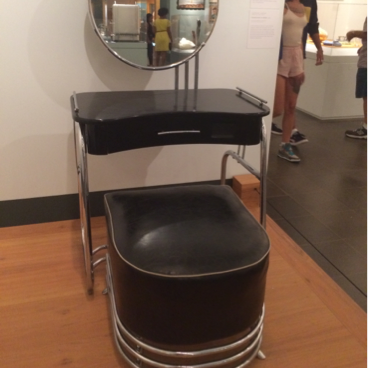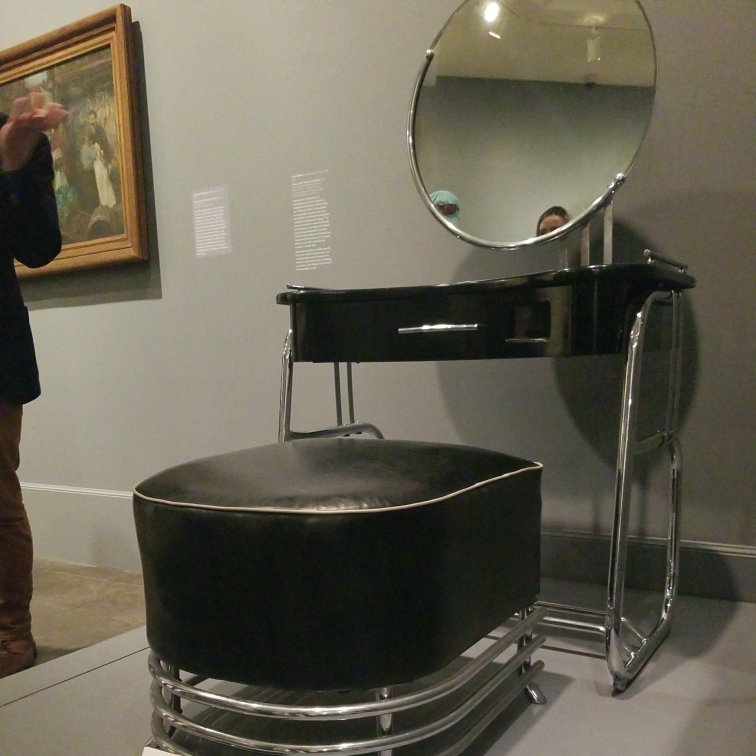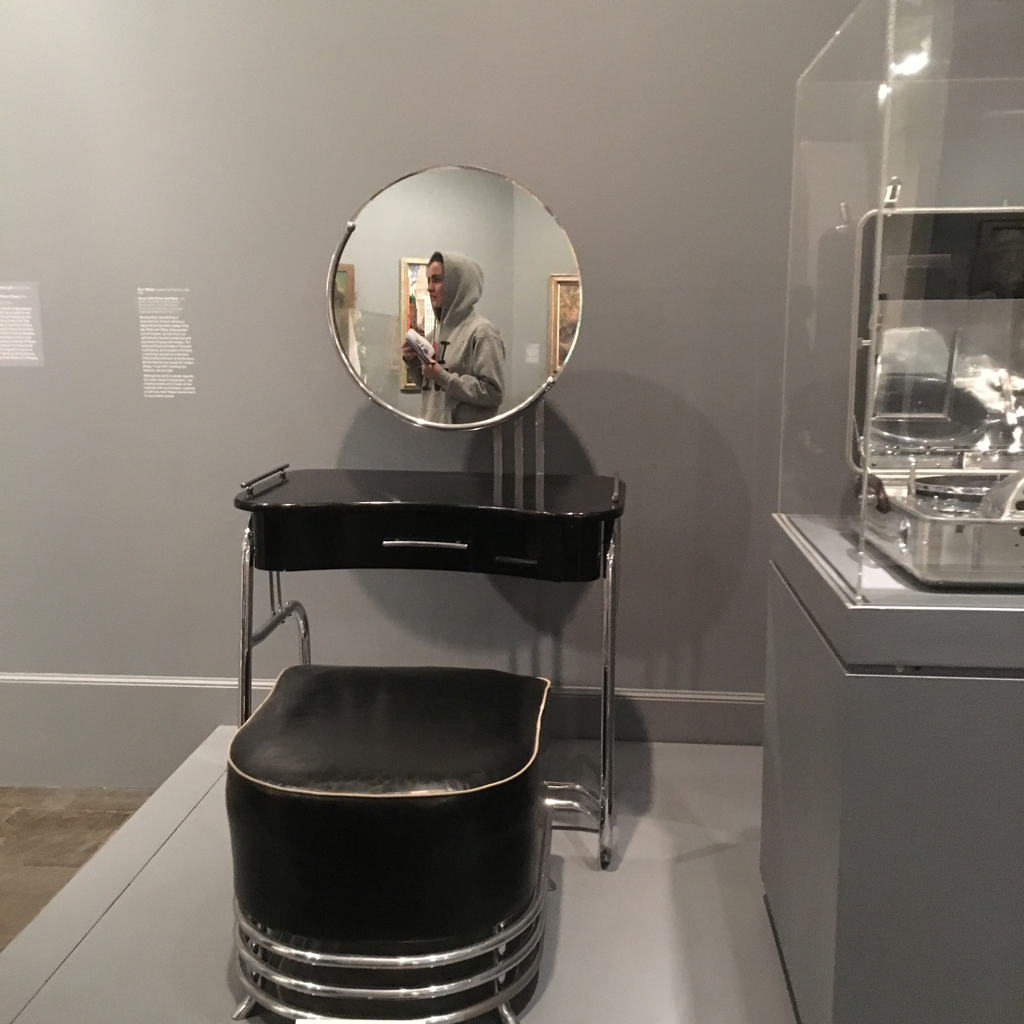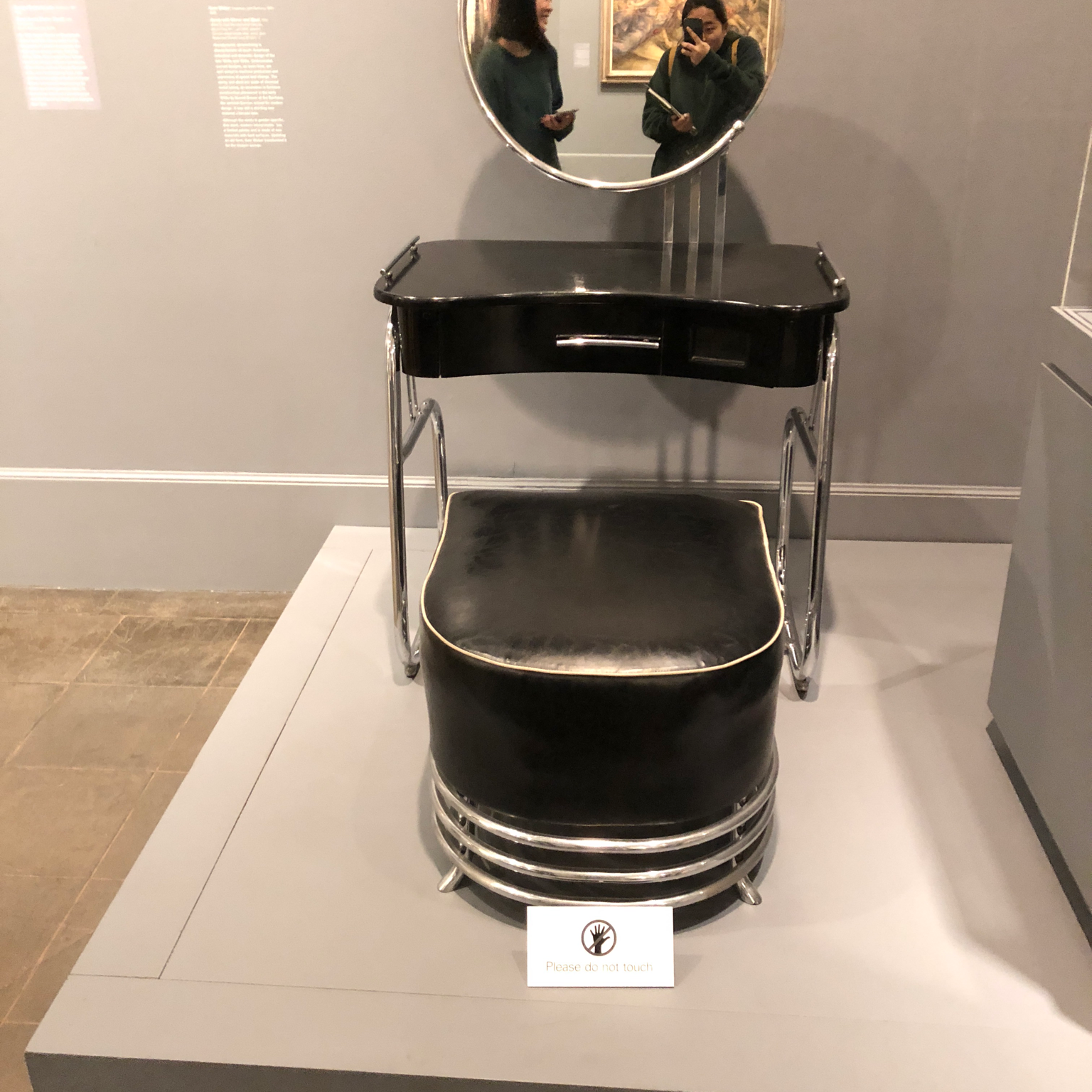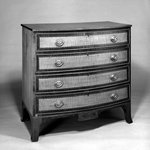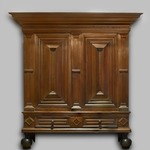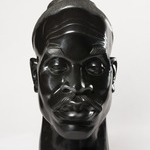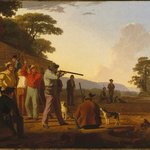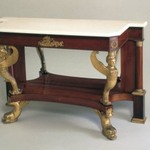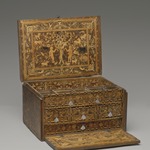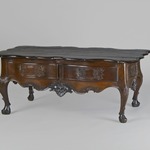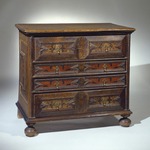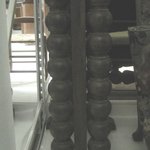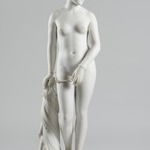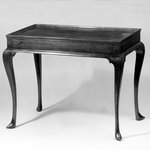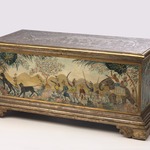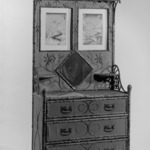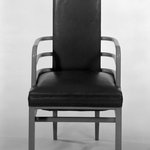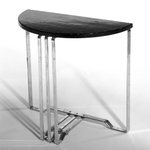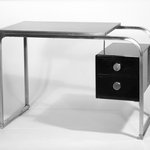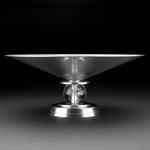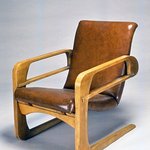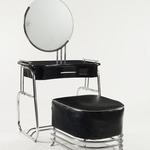Stool
Decorative Arts and Design
On View: American Art Galleries, 5th Floor, Counterparts
Aerodynamic streamlining is characteristic of much American industrial and domestic design of the late 1920s and 1930s. Undecorated, curved designs, as seen here, are well suited to machine production and expressive of speed and change. The vanity and stool are made of chromed metal tubing, an innovation in furniture construction pioneered in the early 1920s by Marcel Breuer at the Bauhaus, the seminal German school for modern design. It was still a startling new material a decade later.
Although the vanity is gender-specific, this stark, modern interpretation has a limited palette and is made of new materials with hard surfaces. Updating an old form, Kem Weber transformed it for the modern woman.
Although the vanity is gender-specific, this stark, modern interpretation has a limited palette and is made of new materials with hard surfaces. Updating an old form, Kem Weber transformed it for the modern woman.
MEDIUM
Chrome-plated tubular steel, upholstery
DATES
ca. 1934
DIMENSIONS
17 1/2 x 21 x 22 1/2 in. (44.5 x 53.3 x 57.2 cm)
COLLECTIONS
Decorative Arts and Design
ACCESSION NUMBER
87.123.2
CREDIT LINE
Modernism Benefit Fund
PROVENANCE
Prior to 1987, provenance not yet documented; by 1987, acquired by Dyan Economakos, Palos Heights, IL;1987, purchased from Dyan Economakos by the Brooklyn Museum.
Provenance FAQ
CATALOGUE DESCRIPTION
Low, four-legged stool, en suite with vanity and mirror (87.123.1a-b). Half an oval in plan, consisting of tubular steel legs and continuous stretchers wrapping around all but front side of stool. Seat is deep (wood-framed?) unit sitting atop legs and covered in black simulated leather.
EXHIBITIONS
MUSEUM LOCATION
This item is on view in American Art Galleries, 5th Floor, Counterparts
RECORD COMPLETENESS
Not every record you will find here is complete. More information is available for some works than for others, and some entries have been updated more recently. Records are frequently reviewed and revised, and we welcome any additional information you might have.


